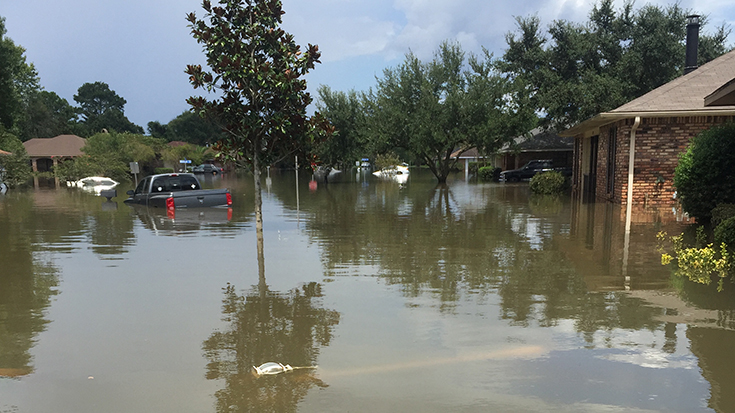
Natural disasters can occur anywhere and anytime, impacting our members. In 1992, the AARC Disaster Relief Fund was created to provide some assistance to our members during these events. It’s a way to help people in a time of need. The AARC has given about $250,000 to members since the program began—more than $40,000 of which has been given in just the past month. We asked some previous fund recipients to share their story, to learn how this fund brought some help and peace to them.
Donate to the Disaster Relief Fund
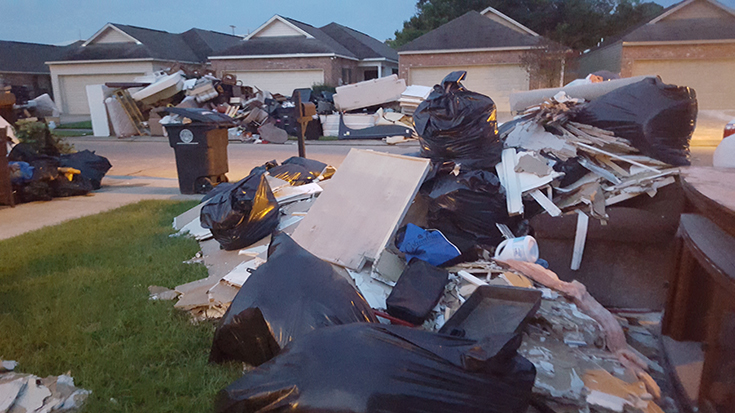
Xiao Chu, RRT
Baton Rouge, LA
“During [the] Louisiana Historic Flood in August 2016, my house and my car were flooded within a few hours,” Chu said. “It came so fast, we did not have time to get anything out of our house.”
Chu and her family had more than two feet of flood water in her house.
“We lost everything,” she said, explaining that her car was totaled, and, since her house was not in a flood zone, she did not have flood insurance.
“During that very difficult time, a little help meant a lot to my family,” Chu said. “We deeply appreciate AARC’s Disaster Relief Fund. We used the fund to buy dehumidifiers, fans, and cleaning supplies after the flood.”
Chu and her family are still in the process of rebuilding their home.
“But we are getting closer and closer to finishing it,” Chu said, noting that she has since moved back into her house
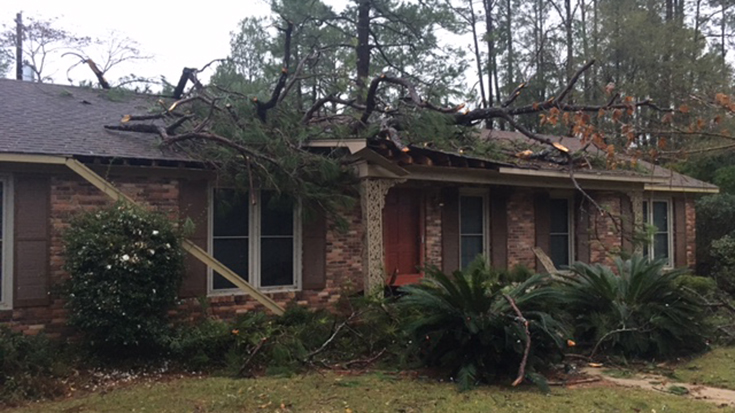
Allethea Brooks, M.Ed., RRT
Albany, GA
On January 2, 2017, Albany, GA was hit with the first line of tornadoes and straight-line winds.
“My family and I were in a rental house and a very big pine tree came across the entire house, hitting it in the middle where we were huddled in the hallway,” Brooks said. “Thankfully my husband, myself, and our three children came out of the house untouched, not one injury to any one of us.”
Brooks explained that while they lost a lot of personal items, they felt blessed and grateful to not be hurt.
“I cannot begin to describe the days beyond this night,” Brooks said. “Our community really came together and helped one another out.”
Once the storm passed, Brooks described an initial sense of chaos in the streets that night, which began to lessen as the community began working together.
“As daylight approached, not only did the citizens of Albany band together to help each other out, several other nearby communities came here to help,” Brooks said. The community came together to begin removing the fallen trees covering the streets.
“Rather than waiting for the city to come, people brought their own personal tractors and chain saws to remove them,” Brooks said. “I remember perfect strangers bringing by lunch and snacks as we worked in the yard.”
Brooks shared that she and her family “spent many hours cleaning up from the storm.” They had to pack up their home and move twice within three weeks before they could be settled again.
“I would like to send a very big ‘Thank You’ to the AARC Disaster Relief Fund,” Brooks said. “These funds helped with gas and food as we were going back and forth, moving our belongings multiple times, as well as not being able to cook and have access to a kitchen.”
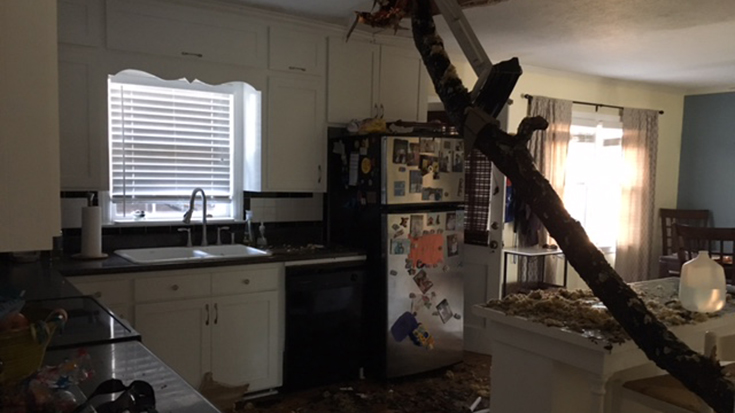
Katie Brown, RRT, M.Ed.
Albany, GA
Katie Brown, director of clinical education for the Respiratory Care Program, and her family, were also affected by the Jan. 2, 2017 storm that hit Albany, GA.
“We knew there was rain and some wind, but that is nothing unusual, in fact, we love a good thunderstorm,” Brown said. “Then, the electricity went out and we could really hear the wind and the pressure changes became very obvious. My husband told me that we should probably get our kids and dog and get into our hallway bathroom. Something just didn’t feel right.”
When Brown opened the bedroom door to get her children, she heard a huge crashing sound and then panic set in.
“I swooped up my girls and ran to the bathroom–our dog followed with no hesitation,” Brown said. “As we all huddled in our bathtub, a million questions were running through my mind.”
Brown and her family could only hear the sounds of water rushing into the house and wind.
“My husband found a flashlight and went to check out the damage while the rest of us sang songs and prayed–trying to stay calm and keep the kids calm,” Brown said. “When he came back to the bathroom, I asked what window was broken because I heard glass break when the crash came. He then said, ‘it wasn’t just a window, there is a tree in our kitchen and the water you hear running is rain flooding our house.’”
Once the rain slowed down, Brown and her family grabbed some clothes and decided to get out of the house, for fear of another tree fall.
“At this point we had no clue what the damage was to our house or any of neighbors or town,” Brown said. She and her family planned to go to a small family farmhouse they have, a couple of towns away. “After we pulled my car out from under our carport that had fallen on it, we loaded up and made our long attempt to get out of town. It took about an hour to find an open path to get out of town and, finally, we were on our way to a safe house for our family.”
They had to live at the farmhouse for about two months while construction was done on their house. Brown explained that there was no way she and her family could stay in their home the way the storm left it. Their entire street was out of power for about a month.
“Through help from local friends, volunteers, and organizations like AARC, our family was able to drive back and forth–an hour one way–from our farmhouse to Albany every day. This way, we could keep our girls in their normal school and we could continue to work at our jobs,” Brown said. “With the money graciously given to us by the AARC Disaster Relief Fund, we were able to afford the gas needed to drive back and forth to our safe home away from home. This was a huge help to my family! Going back and forth, although it’s a long drive with two small kids, enabled us to keep some sort of normalcy in our otherwise chaotic life at the time.”
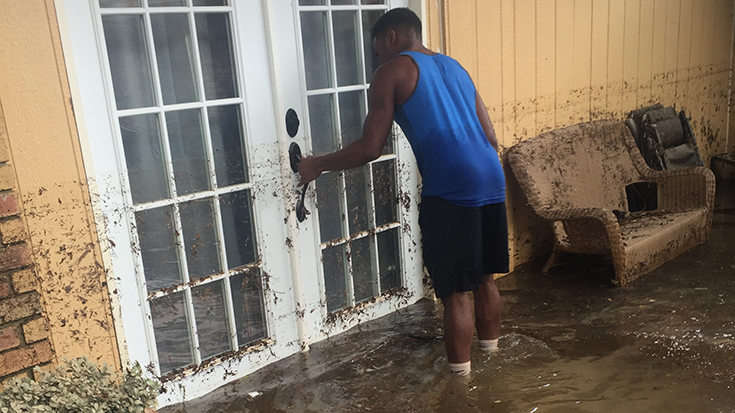
Sandra Winfrey, RRT
Baton Rouge, LA
On Aug. 13, 2016 Winfrey had a life-changing experience. She woke up at 5 a.m. that morning with the intent on going to work, but instead discovered the streets were covered with water.
“My husband went to walk the streets with his rubber boots to see if we could possibly get our vehicles out,” Winfrey said. “It was impossible. The water was up to his waist.”
At this time, Winfrey and her family weren’t worried because they had lived in their home for 29 years and had never experienced something like this before. She called in to work to let them know she wouldn’t be able to make it in due to the high water. She then proceeded to carry out her day as normal, thinking she would be able to get out in a couple of hours when the water subsided .
“Unfortunately the water rose and started to enter my home at 2:30 p.m.,” Winfrey said. “In disbelief, I tried sweeping the water out and, when that didn’t work, I put some towels down to try and soak the water up. Eventually I realized I could not keep up so I told my kids to pack a bag.”
Winfrey and her family tried waiting for a boat, but every time one passed, it was already full.
“So we had to walk out,” Winfrey said.
Her home received five feet of water and they lost three vehicles.
“Fortunately we did not lose our life,” Winfrey said. “When we got a chance to return to our home, it was devastating to see our things all over the place with mud all over them. I never in my life knew water could do so much damage. This flood changed our life actually in a good way. We live life now and don’t sweat the small things.”
Winfrey explained she and her family were grateful to receive the AARC Disaster Relief Funds, which they used to help replace their washer and dryer.
“We will be forever thankful,” Winfrey said.
Christine Pellissier, BS, RRT
Baton Rouge, LA
Christine was also part of the Baton Rouge flooding that happened in August 2016. During these storms, there was lots of rain and the city structures couldn’t hold, which resulted in a great deal of flooding. Pellissier explained that much of the city was not prepared for this level of flooding. Because of this, many homes did not have flood insurance because they weren’t even zoned for flooding. Furthermore, Pellissier was in the process of selling her home and had just completed renovations when the storms hit.
The Disaster Relief Fund helped put Pellissier’s mind at ease while she was in the middle of having to work with various agencies to get things settled and worked out. It even helped her take off time from work to take care of everything that needed to be done. She was able to sell her home and now lives in New Orleans where’s she’s started a new job and is helping open the new VA hospital.
Applying for Assistance
Most recently, the AARC Disaster Relief Fund was activated for the victims of the 2017 summer wildfires and hurricanes.
Members living in federally-declared disaster areas may apply for a grant of up to $500, either online or by mail using our downloadable application form. Applications will be reviewed at the AARC executive office, and will then be sent on to the president of the state society for verification and a recommendation of action.
Since it was first established, the AARC Disaster Relief Fund has been used following hurricanes in Florida and Hawaii, earthquakes and fires in California, flooding in the Midwestern states, tornadoes in numerous areas of the country, and in the aftermath of Hurricane Katrina. The Fund is open for six months from the date of the disaster.
Contributions
If you would like to contribute to the AARC’s Disaster Relief Fund, you can donate by sending a check made payable to the AARC at 9425 N. MacArthur Blvd., Suite 100, Irving, TX 75063. Put “Disaster Fund” in the memo section of the check. You can also donate online or call the AARC’s Customer Service Department at 972-243-2272 and tell them you want to make a donation with a credit card.